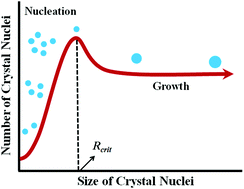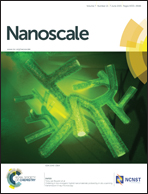Understanding the crystallization behavior of as-deposited Ti–Sb–Te alloys through real-time radial distribution functions†
Abstract
Phase change materials, successfully used in optical data-storage and non-volatile electronic memory, are well-known for their ultrafast crystallization speed. However, the fundamental understanding of their crystallization behavior, especially the nucleation process, is limited by present experimental techniques. Here, real-time radial distribution functions (RDFs), derived from the selected area electron diffractions, are employed as structural probes to comprehensively study both nucleation and subsequent growth stages of Ti-doped Sb2Te3 (TST) materials in the electron-irradiation crystallization process. It can be found that the incorporation of Ti atoms in Sb2Te3 forms wrong bonds such as Ti–Te, Ti–Sb, breaks the originally ordered atomic arrangement and diminishes the initial nucleus size of the as-deposited films, which results in better thermal stability. But these nuclei hardly grow until their sizes exceed a critical value, and then a rapid growth period starts. This means that an extended nucleation time is required to form the supercritical nuclei of TST alloys with higher concentration. Also, the increasing formation of four-membered rings, which served as nucleation sites, after doping excessive Ti is responsible for the change of the crystallization behavior from growth-dominated to nucleation-dominated.


 Please wait while we load your content...
Please wait while we load your content...